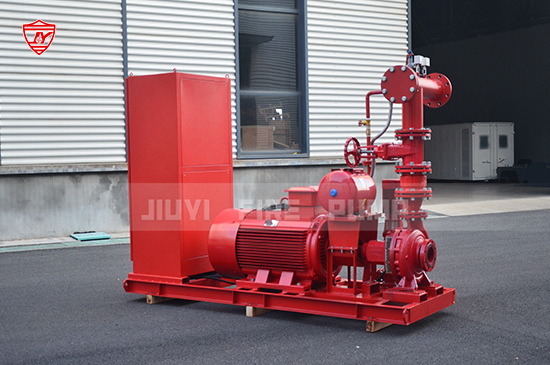Water hammer is a serious issue in fire protection systems that can damage pipes, valves, and other critical components—potentially compromising the system's performance during emergencies. Understanding how to prevent water hammer in fire pump discharge lines is essential for maintaining a reliable and safe fire protection setup.

Water hammer is a pressure surge that occurs when a fluid in motion is forced to stop or change direction suddenly. This often happens when valves close too quickly, creating a shockwave that travels through the piping system. The result? Loud banging sounds, pipe vibration, and over time, severe mechanical damage.
In fire pump applications, water hammer can:
Crack or burst discharge pipes
Damage valves and fittings
Cause premature pump wear
Increase maintenance costs
Compromise fire system readiness
Given the life-safety role of fire pumps, any disruption caused by water hammer could be catastrophic.
Sudden valve closures: Especially in automatic systems.
High-velocity water flow: When fire pumps operate at high pressure.
Improperly sized piping: Increases system stress during rapid changes in flow.
Inadequate air chambers or surge arrestors: Leaves no buffer to absorb the shockwave.
1. Install Slow-Closing Valves
Control valve closure timing to minimize rapid flow stoppage. Consider butterfly valves with controlled actuators or check valves designed to close gradually.
2. Use Pressure Relief or Surge Tanks
Pressure relief valves and surge arrestors can absorb sudden pressure changes, reducing shock on the system.
3. Design with Proper Pipe Sizing
Ensure discharge lines are sized according to NFPA standards and system flow requirements to reduce fluid velocity.
4. Incorporate Air Chambers or Accumulators
These devices cushion the shock wave and are especially useful in vertical discharge lines.
5. Routine Inspection & Testing
Regular maintenance ensures valves and control systems are operating correctly, helping you catch potential water hammer risks early.
6. Soft Start Fire Pumps
Using variable frequency drives (VFDs) or soft starters can help control the acceleration and deceleration of pump motors, thus preventing sudden pressure surges.
Water hammer might seem like a minor issue—until it leads to costly damage or fire system failure. As a manufacturer of reliable fire pumps, we at Better Technology Group recommend integrating water hammer prevention strategies right from the system design phase. Your fire protection system should be built not just to comply with codes, but to endure real-world conditions where every second—and every component—counts.